Aero Helmet Comparison: Lazer v Giro
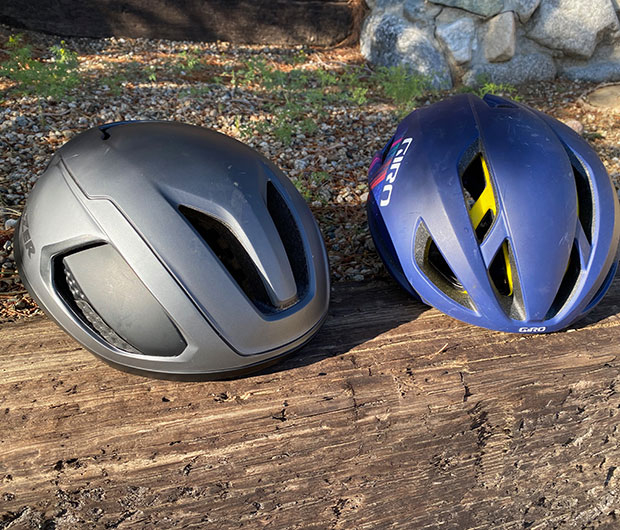
I’ve now got lots of miles in a pair of new aero helmets, the Giro Eclipse Spherical (I wrote about this helmet earlier this month) and the Lazer Vento (just released to the world this morning). Below are opening thoughts on road aero helmets and then an analysis of two specific technologies: rotational impact safety features (MIPS versus Lazer’s just introduced KinetiCore); and the retention systems each helmet uses. And then, at the end, which helmet among these is my go-to, and why.
The Fallacy of the Aero Helmet
It’s the most imprecise, badly constructed suite of speed testing in all of triathlon: The aero helmet and the projected time cost/savings that flow therefrom. It is “impactful” to discuss helmets against this backdrop, because helmets are not just head impact protection but are often cited by those who know as the single most import piece of aero equipment.
And that would be true, if we pointed them in the race in the direction we point them in the wind tunnel. But we don’t. Here is what we’ve rarely done, though it would be relatively easy to do: Place an accelerometer in or on the helmet and measure how much time the rider looks forward versus how much time that rider looks down. Let us say that we look forward 65 percent of the time during an IRONMAN race; straight down 25 percent of the time; and in between 10 percent of the time. We could then do the sorts of calculations we do with wheels, where we test them in a sweep, calculate how much time is likely to be spent in various yaws on a particular course, and do the math.
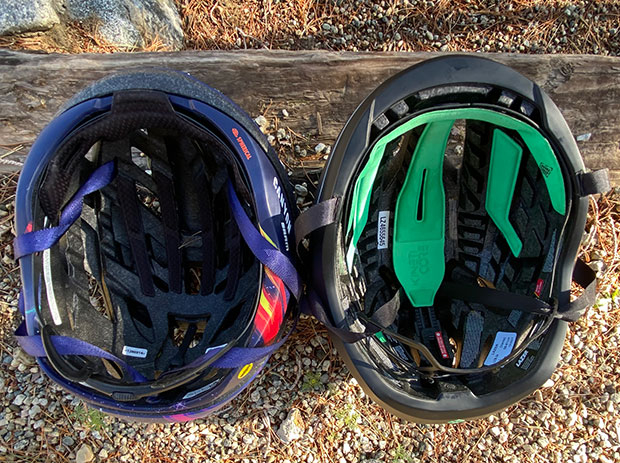
If we considered this change in posture when testing helmets what would we see? If aero helmets are really unaero when the rider looks down, maybe the most aero helmet for long distance racing is the “aero road helmet” like those I’m writing about today. I don’t know; just guessing. But there’s more to consider than just the aero performance of aero helmets in the look-forward posture, and Giro has addressed this (as we will see below).
It is my view that the most important place to save weight among all the equipment we use is the helmet. First, the heavier the aero helmet the more you’ll look down. Second, many of us are doing more of our riding indoors, and we’re not using a helmet. I don’t know about you, but the one area where my riding experience has really changed is early season, when indoor riding has made me fit enough for a nice medium length ride outdoors, but my neck is wholly untrained to hold up that helmet during those 4 and 5 hour rides.
For these aggregated reasons I look at helmets differently now. What I want in a helmet is protection; reasonable venting; decent aero performance; and light weight. But there is one more thing that’s very important to me, which I’ll get to.
Lazer Vento
So it’s come down to this: If a helmet doesn’t weight near (or less than) 300 grams in my size Large I’m not buying it. I explained my reasons above. The Lazer Vento, announced today, weighs in at 290 (stated weight) grams and sells for $290. That’s semi-pricy for a helmet, but helmets last me a long time and there is no contact point other than the saddle, and my cycling shoes, that makes me more ornery when it’s uncomfortable.
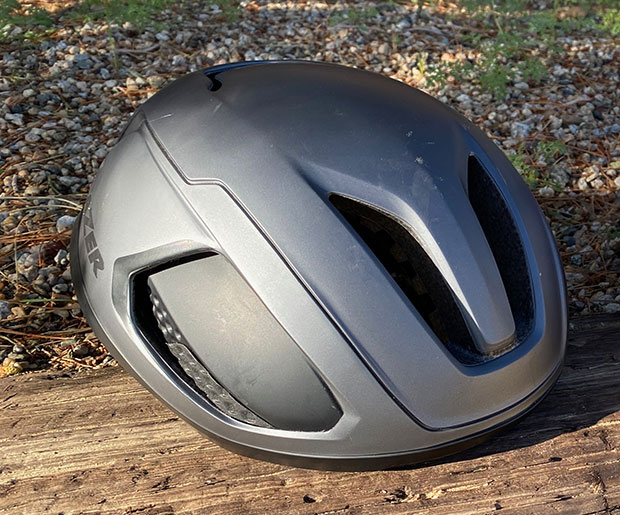
The Vento is among the current crop of aero helmets that take the original aero helmet idea down in weight by about 20 percent. Helmets like the Giro Vanquish and the Lazer Bullet MIPS were trailblazers, but they weighed in the neighborhood of 350 grams. Yes, this is lighter than the 375 to 450 grams that aero helmets often weigh. But the aero road helmet has now gotten lighter. It’s not down to the 230 or 240 grams that the very lightest road helmets weigh, but these aero road helmets largely bridge the aero gap – from strict road to full aero – while offering MIPS-style protection (more on that below), and at a weight in the high-200s grams.
Giro Eclipse Spherical
I wrote about this helmet a few weeks ago; it’s very similar to the Helios Spherical but has a different venting scheme that turns it from a standard-to-aero road helmet. There is no good case I can make for the Helios Spherical. I own both these Giro helmets and they each weigh in at about 270 grams; each will offer great protection; I have not noticed a difference in ventilation; and one is – says Giro – considerably more aero.
Just as observer, here is what I think I notice: the original aero road helmet was a wholly new shell shape, wholly new design. The new aero helmet simply takes the shape of a standard road helmet, changes the venting scheme, earns a much better aero profile through this venting scheme, while reducing the weight of the aero helmet considerably. The Giro Vanquish weighs 350 grams, while the Eclipse Spherical weighs 270 grams. For my use, the Giro Eclipse Spherical just made their other road helmets in this price class obsolete.
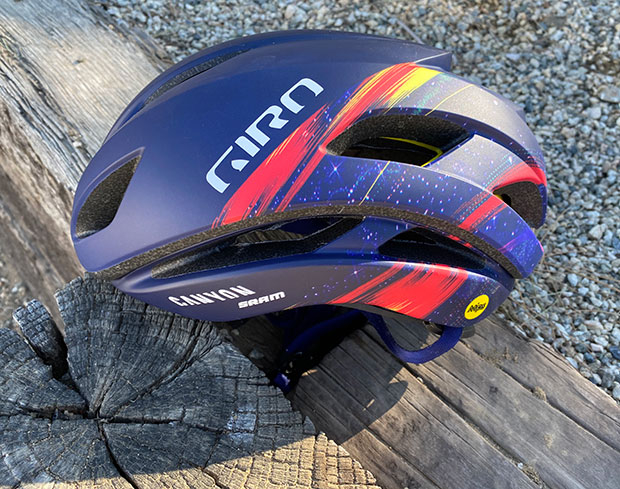
This helmet costs $250, so is a bit easier on the wallet than the Lazer Vento. I expect to pay in the mid-to-high $200s for the helmet I’m looking for (aero and sub-300 grams).
As to the aero performance of the helmet, here is what Giro says: “Eclipse beats the closest aero road helmet competitor by 14 seconds over 100 miles at 25mph, and is a full minute faster than our own Vanquish. (Wind Averaged Drag, combination of 80% typical riding position and 20% head down riding position.)” Bravo for being the first that I’ve read to acknowledge how we use our helmets in the real world.
KinetiCore versus MIPS
Hard-shell helmets have protected against blunt force impact since their inception, but there is a kind of crash where the helmet rotates upon impact, and the head with it. MIPS is a technology used by almost all leading bicycle helmet companies, and the idea is to separate the outside of the helmet from the inside, allowing the outside of the helmet to rotate independently. Lazer was a very early adopter of MIPS. If you look at that yellow-colored thing in the Giro Eclipse Spherical, that is the MIPS layer.
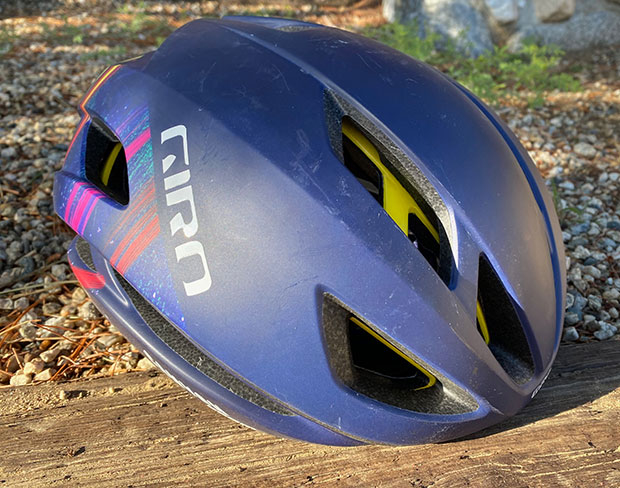
A new suite of Lazer helmets announced today use a technology developed by Lazer called Kineticore. Here is what Lazer did, to the best of my understanding: They craftfully excised sections of the compressible polystyrene foam (i.e., they hogged out a bunch of Styrofoam), so that when the helmet is presented to the head in shear, the polystyrene remainder collapses like dominos. The Lazer folks refer to this as crumple zone technology, just like in your car.
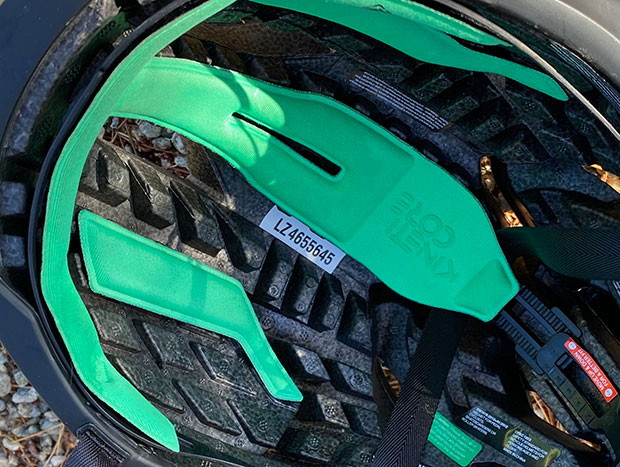
I don’t care if it’s high-falutin; I only care that it works. This is ingenious because you’re not adding anything to the helmet; you’re removing material from the helmet. What I don’t quite understand is why this isn’t a 260 gram helmet, since you don’t have to onboard a MIPS plastic layer, and you offload foam. But this is an aero helmet, and that means adding some of the foam back (closing some vents to gain aero).
Retention Systems
I did not realize until late in life how oddly-shaped my head is. I was in Albuquerque last week and took the opportunity to visit and old, renowned hat shop, because of their ability to shape hats and cut brims on the spot. The hatter immediately recognized my bullet-shaped head and the problem it represents: Hats (and bicycle helmets) strangle my head front-to-back, while leaving room on the sides. There are two remedies for this in helmets: pads of various thicknesses that Velcro into the helmet’s inside; and retention systems that cradle the head independent of the helmet shell.
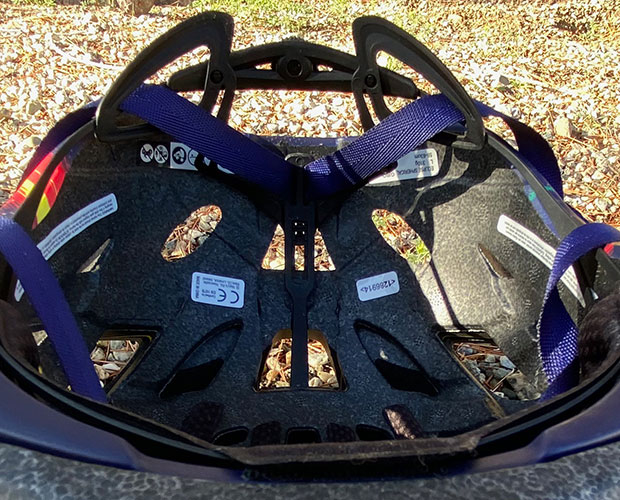
Giro’s retention system is the ROC LOC® 5 AIR and let’s talk about this against another of my idiosyncrasies: Helmets tend to rotate forward on my head when I look down, or when I descend. This is especially the case if it’s a bumpy descent, because that bump accelerates the momentum of the helmet’s weight as it curves around my head in its forward arc, and when that helmet rotates forward – it disrupts my view. Because I now just ride aero road helmets all the time, for everything, my tri helmet is my gravel helmet. It’s a real pain on a bumpy gravel to have my vision obscured by my helmet. We'll return to this in a moment.
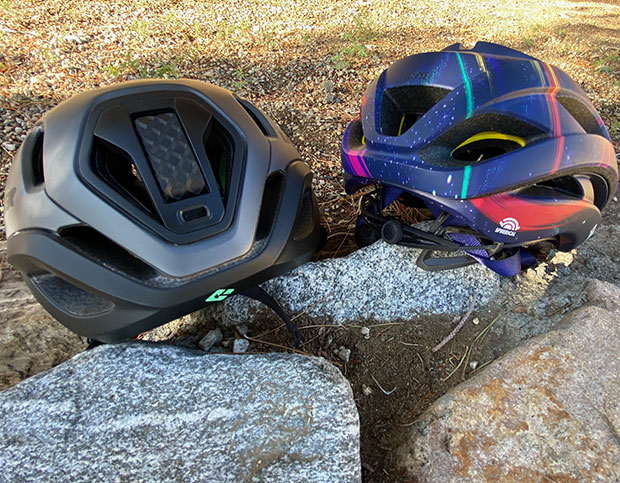
The only adjustments most people make in their helmets are the convoluted straps that lead from your helmet to the buckle under your chin; and to tighten/loosen the retention system. That’s either done using a ratchet dial (see that in the back of the Giro helmet above), or in the case of Lazer a thumb wheel on top that resembles a tiny treadmill (also viewable in the image above). Lazer’s retention system is called the Advanced Rollsys System (ARS).
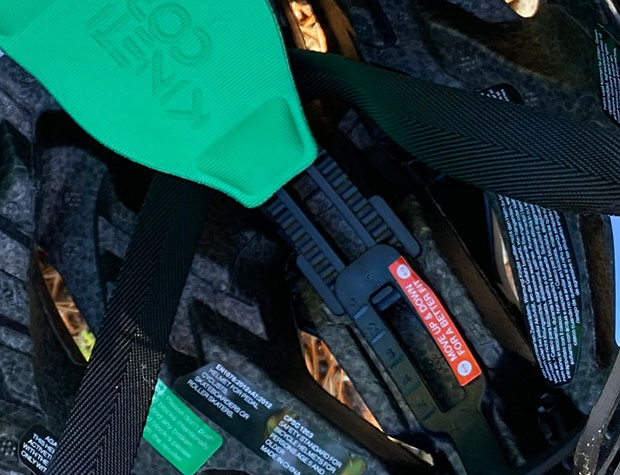
In the back of your skull is the occipital bone. Your cerebellum sticks out, behind your head, like the trunk of a car, and that bone protects it. It’s the rear undercarriage of your brain. For my odd head the successful retention system reaches down and cradles the occipital bone from the underside, and that keeps the helmet from rotating forward. Fewer people appreciate that retention systems can be raised and lowered. In the image above you see where that adjustment is in the Lazer Vento, and that adjustment is also available in the Giro’s ROC LOC ® 5 AIR system, but that range and function of that adjustment is, in my opinion, a weak spot of that retention system.
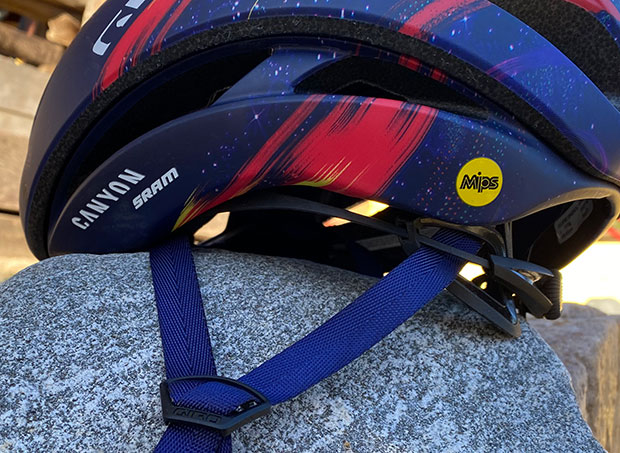
If you look at the way these retention systems present to the rider’s head – the shape of the system’s basket, and where it contacts the head – you may be able to see in the image above how the Giro’s basket connects to one’s head. Below shows that the Lazer Vento’s basket grabs my occipital bone from its underside. This means that – for my oddly-shaped head – that helmet is less likely to rotate forward in those conditions that I described above.
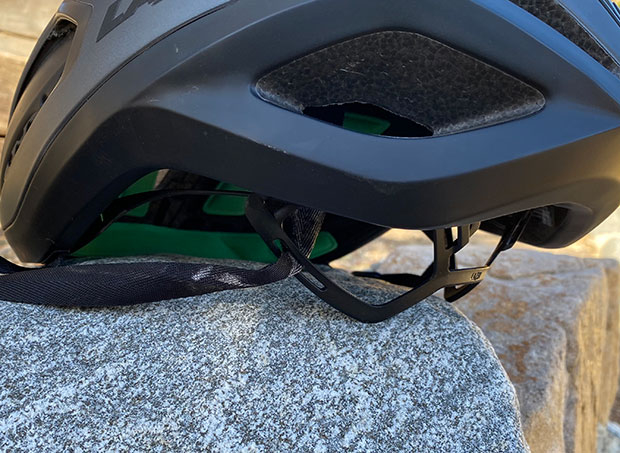
What about aero performance? We see that the Giro Eclipse Spherical outperforms its own Vanquish, using Giro’s more realistic 80/20 head up/down posture. It also says this helmet is marginally more aero (a few seconds over 100 miles) than its nearest competitor. What is that nearest competitor? Don’t know. Lazer is circumspect about the Vento. It was very slightly (2.3%) more aero than Lazer’s own Bullet 2.0, but that helmet had closeable vents. The Vento beat the Bullet 2.0 with its (Airslide system) vents closed. The Vento, like the Giro Eclipse Spherical, beats the prior generation aero helmet but with much better venting and the Vento – like the Eclipse – does it at a much lighter weight (the Vento is almost 30 percent lighter than the Bullet 2.0).
My Choice
On paper, there’s a lot of reason to choose the Giro Eclipse Spherical: $40 less money, 20 grams lighter, but…
For me these two helmets each weigh exactly 309 grams (I require a size Large, and the published helmet weights are typically in size Medium). So, that’s a push. I’m quite happy with the Giro. I think I very marginally prefer the Giro’s ratchet dial to the the Lazer’s retention adjustment system. But the Lazer Vento wins for me only because of my arcane head shape, and the way the retention basket cradles my head, and which keeps the helmet in place.


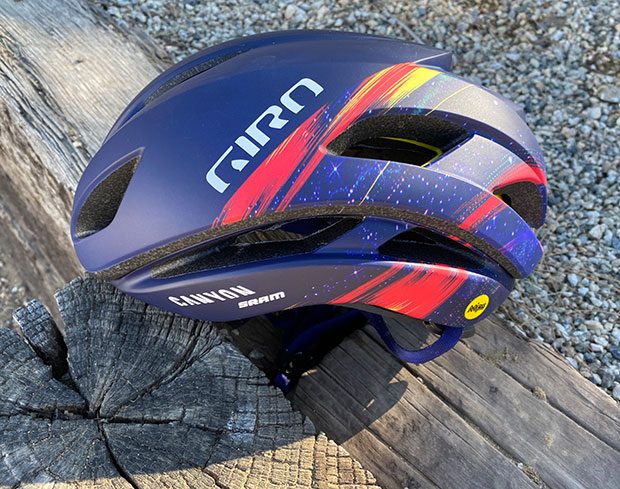
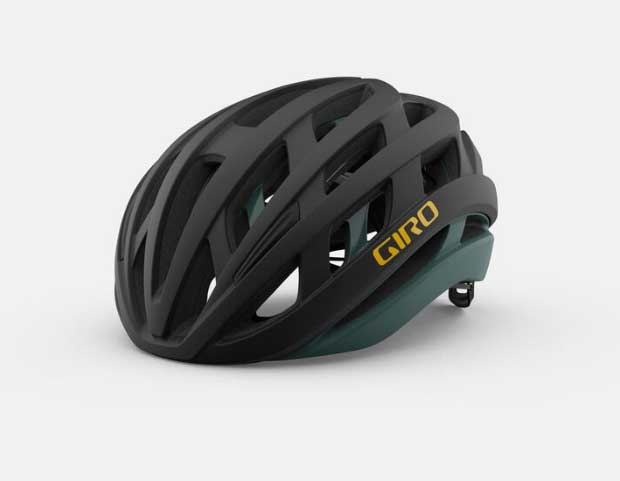
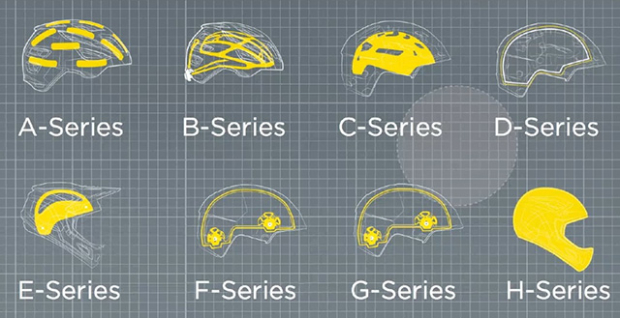
Start the discussion at slowtwitch.northend.network